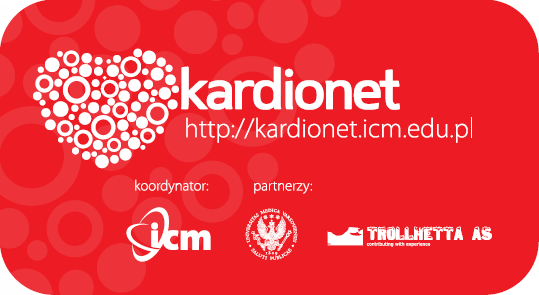Completed – Kardionet, Medical imaging
 The project is a cooperation with the University of Warsaw that integrates advanced methods of medical imaging, distributed acquisition, archiving and teletransmission in an integrated system of cardiological care of acute coronary syndromes.
The project is a cooperation with the University of Warsaw that integrates advanced methods of medical imaging, distributed acquisition, archiving and teletransmission in an integrated system of cardiological care of acute coronary syndromes.
An acute coronary syndrome, including an infarction, is one of the major health problems in modern societies. Each year, approximately 100 thousand people suffer from a heart infarction in Poland. The first hours are crucial for the future of the patient. In this case, the critical factor is the time necessary for formulating a precise diagnosis and commencing a therapy.
The project is carried out under the partnership cooperation of the teams of the University of Warsaw – the Interdisciplinary Centre for Mathematical and Computational Modelling and the Medical University of Warsaw – the 1st Department of Cardiology and the Department of Medical IT and Telemedicine and a Norwegian partner – Trollhetta AS.
The objective of the project is to improve the quality of medical services by applying the latest IT developments in cardiology.
The purpose of the system is to enable storing and providing multimodal data collected in the form of an electronic case history including visualized results of medical examinations such as ECG, echocardiography, CT, MRI and many other specialized examinations and data enabling a faster and better diagnosis. An electronic case history will constitute a universal tool for communication between various regional and reference medical centers which participate in the cardiological patient treatment process. Thanks to the system, a physician in an ambulance will be able to quickly consult a cardiologist on duty in the hospital. It will result in the formulation of the correct diagnosis thanks to which the patient will receive the necessary medical assistance and will be immediately transported to a hospital where an emergency invasive treatment of acute infarctions is performed. The transmitted patient information will facilitate the correct therapeutic decisions. The system will enable scientific research projects to be carried out on the basis of the data of a large number of patients. This will provide the means to answer the question which is the most successful method of intervention regarding coronary patients.